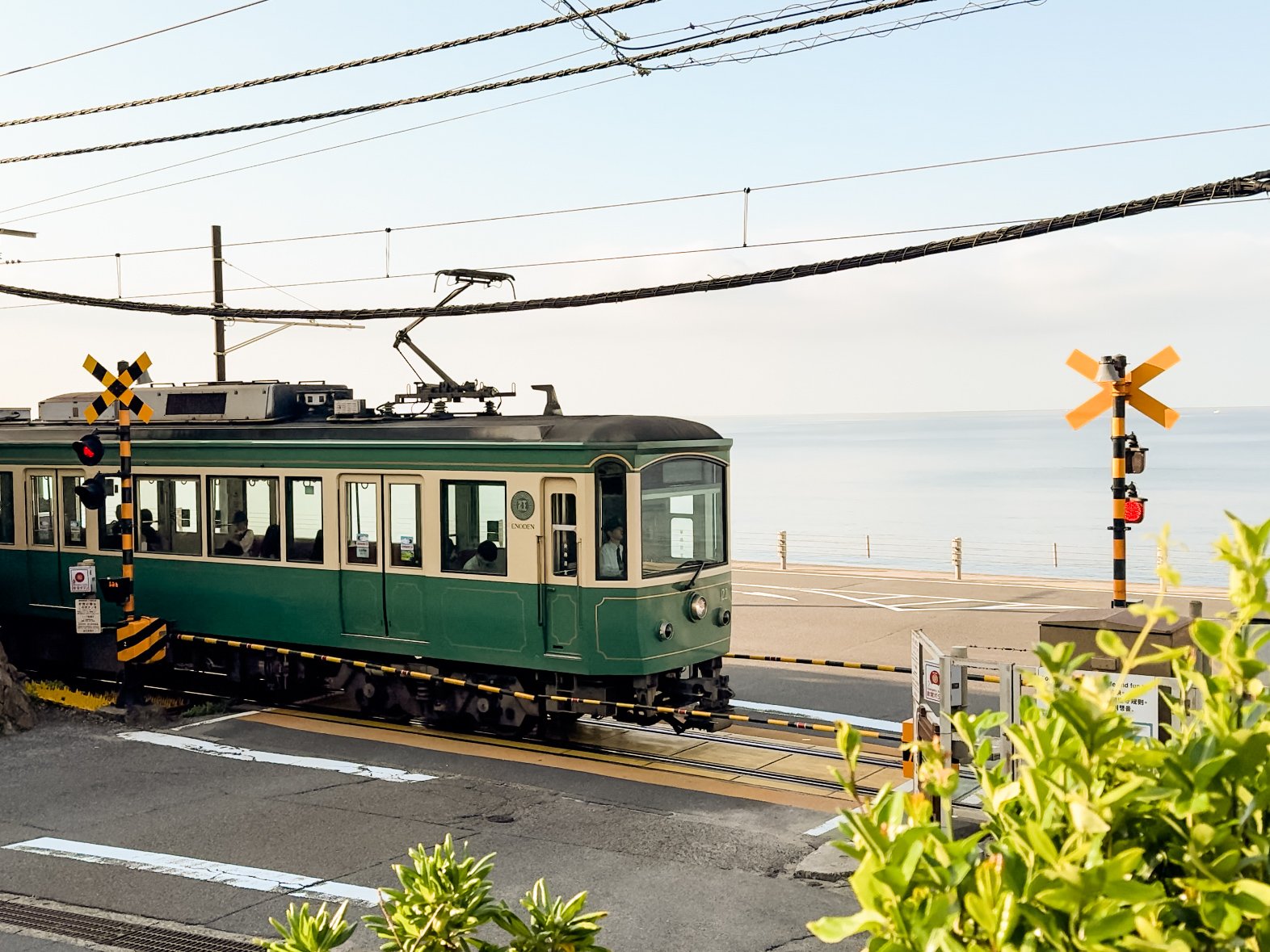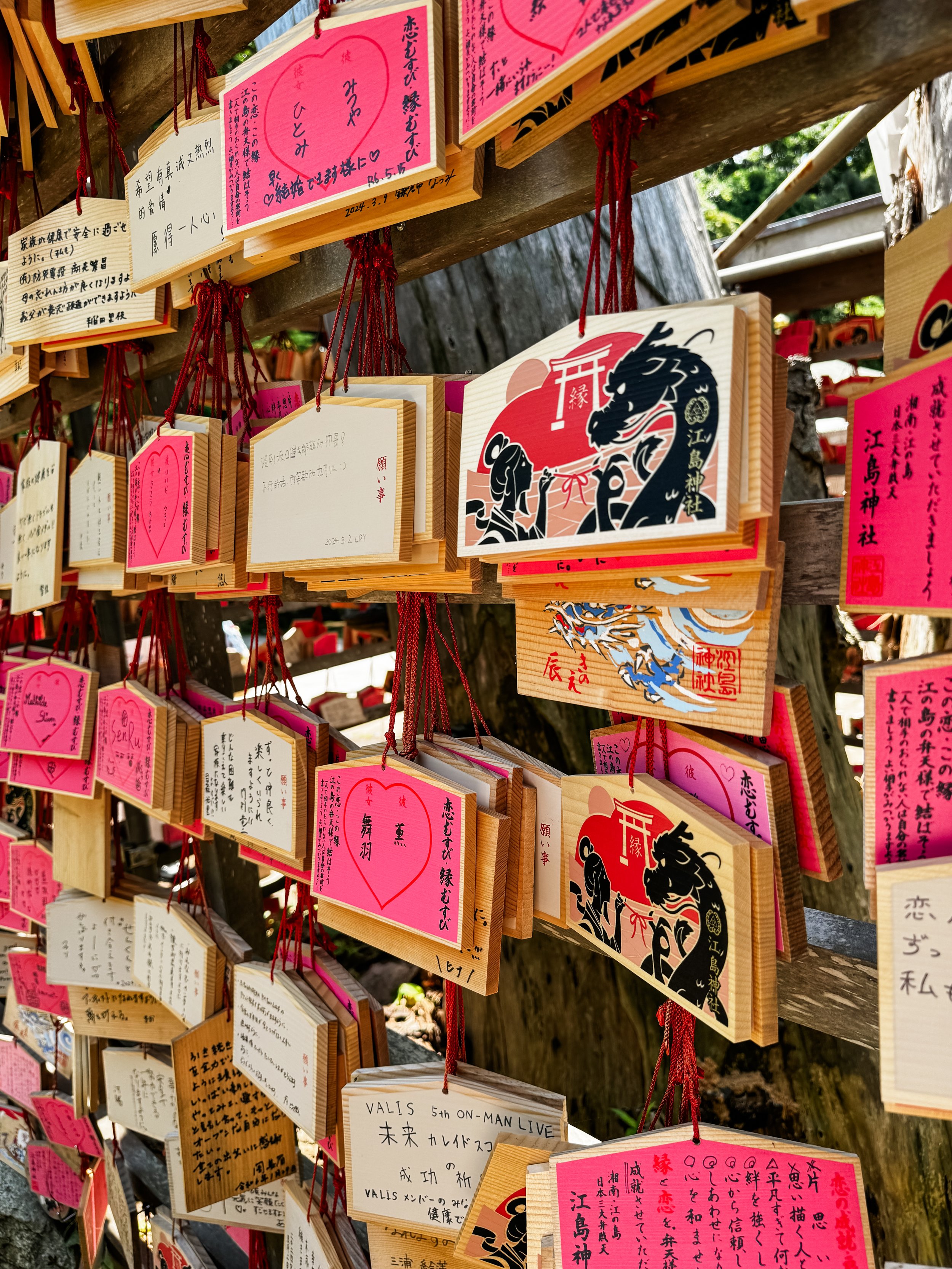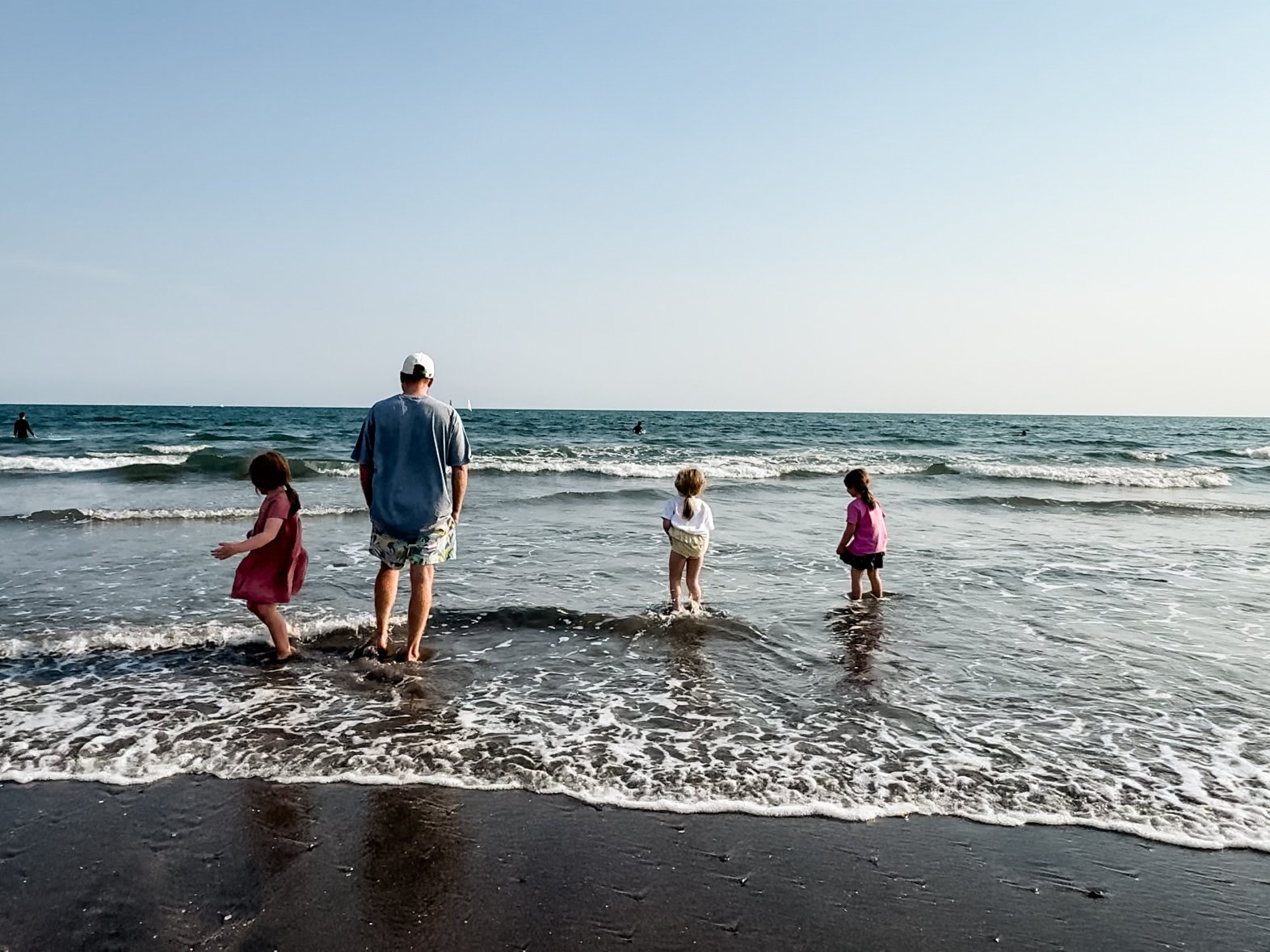The second day we were in Kamakura, we decided to head over to the neighbouring beachside town of Enoshima. I had grabbed a local brochure of the area and also read a few blogs, all of these highlighted Enoshima Island and the Enoden Rail Line. The dragon myth associated with the island particularly caught my interest, so it felt like a great way to see more of the area.
The Enoden Electric Railway runs along the coastline between Kamakura and Enoshima. It’s a retro stye tram like train that has a very quaint feel to it. It was a fantastic way to see the coastline and we saw so many people taking photos of the train as it passed by. Once we arrived at Enoshima train station, we found that the train has it’s own little merchandise shop, it’s like train itself is a local celebrity. I later found out that there is a well known anime film called Slam Dunk that features the Enoden Train and specifically the Kamakurakokomae train crossing. This particular area was swarming with tourists taking photos. (I came back the following morning, to capture the photo below)
The town of Enoshima seemed a little more built up than Kamakura, with more high rise apartments and a few more tourist attractions like an aquarium. Enoshima Island is just across a short bridge from the mainland and is steeped in mythology about a dragon and a goddess.
The legand, called the Enoshima Engi, it is a Japanese chronicle written in 1047 by the Buddhist monk Kokei. It narrates the mythological origins and history of Enoshima Island and its associated shrine, dedicated to the goddess Benzaiten. The text combines historical records and folklore, detailing the divine intervention of Benzaiten to subdue a five-headed dragon that was terrorizing the local population. The dragon, after falling in love with Benzaiten, reforms and transforms into a hill on the island, symbolizing the triumph of spiritual power over destructive forces. The Enoshima Engi is an important cultural artifact, blending religious themes with the geographic and social history of the region.
The island itself was so fascinating! We were able to walk across the bridge and into the bustling narrow street that led up to the steep stairs of the shrine. We ascended all the steps to the top of the hill to the Enoshima Shrine, dedicated to the goddess Benzaiten. The area was very lush and tranquil, with stunning views of Sagami Bay. We continued on to the ocean side of the island, in search of the sea caves, where we wound our way through the narrow lane that was filled with restaurants that overlooked breathtaking views of the ocean. No cars are able to access this part of the island so it was quite intriguing how they would be able to supply all these restaurants.
The final leg of the journey took us down steep stairs towards the island's southern tip, where the Enoshima Iwaya Caves awaited. These ancient sea caves, carved by centuries of ocean waves, are shrouded in mystery and spiritual significance. We were given little candle lanterns to take with us down the first cave to the alter of the goddess Benzaiten. The girls were given battery powered lanterns but they loved the experience of carrying the lanterns.
The second cave is home to a large dragon statue, complete with lighting and thunder sound effects. The girls were slightly scared to go close the dragon, but afterwards they talked about how cool it was to see the dragon cave.
Below the sea caves is a rocky shoreline, there was plenty of people enjoying the sunshine and fishing out into the ocean. On a clear winter day, this area apparently has an incredible view of Mt Fuji across the bay.
We were relived to find that there was a little ferry that took passengers between the ocean side of the island and the mainland. I had kind of winged the whole sea cave quest, without giving much thought to how we’d get back. So rather than walk back up and over the island, we opted for the speed boat. The girls loved it. It was another unexpected highlight of the day. For our last full day of sightseeing in Japan, it turned out to be a favourite of mine.
























